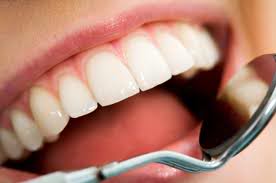Hemophilia Patients Show Worse Oral Hygiene than Healthy Controls, Study Reports

Oral hygiene among children and adults with severe hemophilia is poorer than in healthy controls, a single-center study suggests.
The study, “Oral hygiene and dentition status in children and adults with hemophilia: A case–control study,” was published in the journal Special Care Dentistry.
Dental care is a health concern often neglected by patients with hemophilia and other bleeding disorders due to fear of the risks associated with dental intervention.
In this study, authors assessed the oral health and dentition status of patients with hemophilia and compared it with age-matched healthy individuals. Moreover, they investigated the reasons for fear of dental treatment.
They carried out an oral examination on 100 male patients with hemophilia, with a mean age between 2 and 71 years old, and 100 age-matched healthy participants used as controls recruited at a single center.
Most of the hemophilia patients, 81%, were younger than 30. Hemophilia A was also more prevalent, comprising 86% of the patients, versus 14% with hemophilia B. Of the patients, 54% had severe forms of the disease.
Oral health and dentition status were assessed using the simplified oral hygiene index (OHI-S), measuring the presence of debris on the surface of the teeth; plaque index, which measures both the soft debris and mineralized deposits; and the DMFT index.
DMFT, which was measured in both children and adults, means the total number of teeth (T) or surfaces that are decayed (D), missing (M), or filled (F).
The number of participants reporting bleeding gums was higher in the hemophilia group, at 28%, than the control group, at 19%. However, this difference was not statistically significant.
Hemophilia patients reported a significantly higher rate of fear of dentists and dental treatment than healthy controls — 17% versus 4%. But this fear was not found to be significantly different between children with and without the condition.
“This indicates that fear is a factor that comes into being only with previous experience. Thus, children with hemophilia are less fearful in their childhood and acquire the fear later on,” the authors wrote. “This could be due to the reason that with repeated episodes of hospital admissions and factor infusions people with hemophilia, although learn to live with the disease, they are more watchful and anxious about the bleeding that could occur.”
Brushing more than once a day and past dental visits were significantly higher in healthy controls than hemophilia patients.
The DMFT index score was the same for both the groups, a score of 3.5. However, overall oral hygiene was poorer for hemophilia patients than in healthy controls — the mean OHI-S was statistically higher in the hemophilia group, at 2.176, than in healthy controls, at 1.721.
These findings suggest that “the oral hygiene of the hemophiliacs was poorer when compared to the healthy controls,” supporting the “need for establishing interdisciplinary care for such individuals,” the study concluded.






